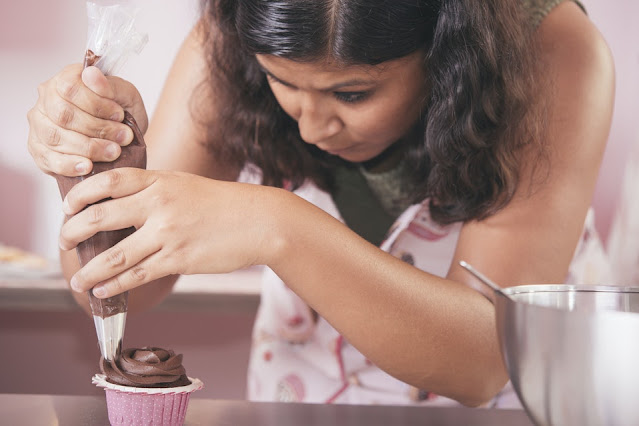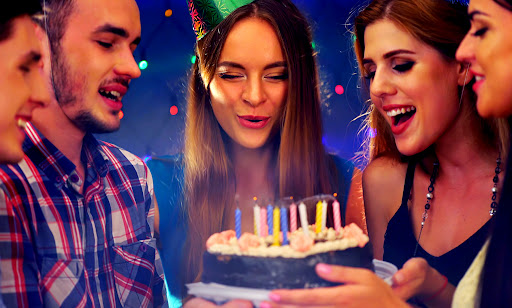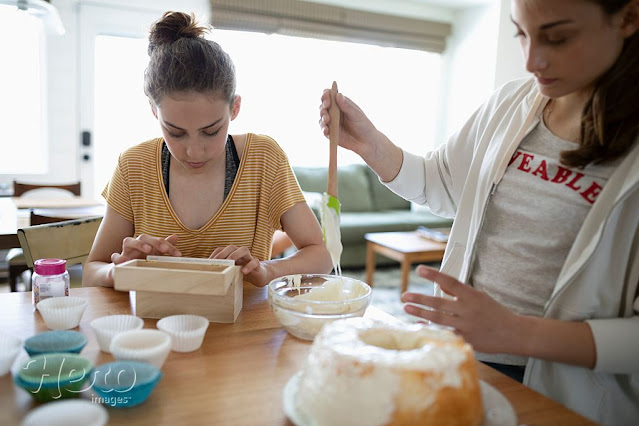How the Cupcake Became a “Female Food”
Maybe it is no incident that the little and humble cupcake became well known in Britain simultaneously as large scale manufacturing of the undergarment. The introduction of little cakes in their own paper cases give us one more thought with regards to why they were becoming famous: they were chic and all around ended up. Lunch time was very much slept with in as a social event at this point, and little treats, conveniently encased in their own covering, were simple and clean to eat. For, cupcakes likewise cooked for another kind of womanliness, one which set consistently expanding accentuation on appearance, dress, and actual excellence including, from the 1840s, the longing to remain neatly corseted into an hourglass shape.
We should likely not read a lot into this hypothesis, notwithstanding, engaging however it very well might be. The little sovereign cake and mince pie molds from prior many years show that little cakes had for some time been famous. The point about modesty remains, nonetheless, and is as yet a component in the prominence of cupcakes today, similar to a connection with gentility. What is it about the cupcake and its kind which is inseparably connected to ladies? What's more is this, eventually, something worth being thankful for or not?
The American author Caitlin Flanagan wrote in her 2006 book, To Hell With All That: Loving and Loathing Our Inner Housewife, about the inherent love numerous ladies have for pretty things. She utilized it to clarify the force of the Martha Stewart domain; her many books and magazines hawk tasks and pictures which are excellent with the end result of being illogical sight to behold rather than things you really have any requirement for. At the core of this, Flanagan says, is the much neglected truth that ladies are joined to homemaking and housekeeping even in a period when these things are not in vogue or expected of freed and vocation able ladies.
The continuous lunacy for cupcakes squeezes into this thought flawlessly. Cupcakes are pretty, and in a way considered generally female: flawless and delightfully made-up. They are likewise a somewhat sensible heat at-home venture which fits the kind of enhancement that the two dazzles and shows parenthood (consider those kids' gatherings such large numbers of us slave over). Their one-segment size makes them ideal for the body-cognizant, a feature of womanhood which has suffered as the years progressed. In conclusion, shop-purchased connoisseur cupcakes are a certain signifier of current great taste and extra cash; another characteristic which makes them interesting to ladies specifically, who actually settle on the majority of the spending choices with regards to family, and especially kitchen, matters.
Cupcakes' size, shape, and appearance all advance a perspective on gentility which also harps on size, shape, and appearance.
In any case, these equivalent characteristics can likewise make unsettling perusing for the individuals who desire to separate from female personality from these features of excellence, slimness, and limitation: the supposition that womanliness goes with pink and things that are charming and glittery, and that attaches ladies to a buyer culture which raises baking and giving sweet treats
The primary method for responding to these inquiries is to say that the greatest contrast for ladies deciding to prepare (or purchase) cake decorating is only that: they decide to do as such, similarly as they pick whether or not to embrace the picture of the 'homegrown goddess.' There might be circles where there is strain to give home-made cupcakes to youngsters' birthday celebrations (high-profile CEO Katya Andreson admits that she, in a snapshot of what she currently views as franticness, scratched the frosting off a group of locally acquired cupcakes to supplant it with something that looked more home-made prior to sending them to school for her girl's birthday), however in general, ladies are not generally expected to invest energy in the kitchen delivering delightful heated merchandise for loved ones on the off chance that they would rather not. Baking, weaving, and other home artworks are not generally just connected with more seasoned ages; it is more youthful ladies who partake in Clandestine Cake Clubs, the more up to date metropolitan type of the Women's Institute, the "WI-light," and who join sewing honey bees and sewing clubs. As far as they might be concerned, these artworks are essential for figuring out how to communicate imagination and female friendship. These are the ones who embrace and try to the term homegrown goddess even while not really viewing it exceptionally in a serious way.
In any case, cupcakes' size, shape, and appearance all advance a perspective on gentility which correspondingly harps on size, shape, and appearance. Evaluates of the cupcake business regularly harp on the exaggerated cutesiness and absence of substance of the little cakes, their paltriness, and shorthand for a sort of rich female way of life. Whenever Hillary Clinton pronounced that number nine of her best ten mission guarantees in her 2007 bid for the Democratic official designation was that everybody ought to get a cupcake on her birthday, she was offering something about her sympathetic characteristics as a female up-and-comer (albeit not as a home dough puncher: in 1992 she is accounted for to have said that she had intentionally shunned remaining at home and baking treats to have a vocation). When of her bid in 2015, she was keeping quiet on the issue of sweet treats, rather offering a lot more grounded expression about orientation balance.
Ladies in all actuality do purchase cupcakes in proportionately more prominent numbers than men however; even the probably male cupcakes prepared by the Manhattan Butch Bakery whose lines have names like the "Driller" and the "B-52," and which include fixings like lager implanted buttercream, disintegrated bacon, and squashed pretzels. The very reality that there is such an amazing concept as male cupcakes says a great deal regarding how these cakes are advertised all the more by and large (yet in addition, maybe, that men in all actuality do like them, as well).
However, a second truth to consider is that men really are getting in on the demonstration. Assuming we consider the British baking peculiarity that is The Great British Bake Off, we might take note of that an extremely enormous extent of finalists and champs have been men, and they have dominated in cake baking and improving as much as in the more conventional male field of bread-production. While the finals in 2011 and 2013 both included three female bread cooks, the one out of 2012 was generally male. The way that ladies totally overwhelmed two out of those three years can likewise be perused as an assertion about female correspondence given that this is an exceptionally aggressive show where "male" characteristics, for example, accuracy and holding one's nerve under tension can do as well as "female" ones like instinct and acquired information. French pâtissier Eric Lanlard (also known as Cake Boy) is promoting a wide range of cake-production for men, while Yotam Ottolenghi's stores consistently show up on arrangements of top cupcake restaurants in London. Florian Bellanger, in the mean time, has been promoting baked good making in the United States after his long spell as an adjudicator on Cupcake Wars.
The straightforward truth is that ladies are not designed to require or even longing food sources that are little, adorable, pretty, or sweet; that they frequently do as such is the consequence of social molding returning many years. "Ladies' food" comprises both of low-calorie and petite food varieties like servings of mixed greens, or then again, of treats which are viewed as passionate supports like cupcakes. They are appeared differently in relation to good, substantial admission searched out by men to top them off and to attest their masculine status of buyers of pursued rather than scrounged food. Over the most recent couple of many years, notwithstanding, this appears to have solidified into an orientation generalization what people get tied up with in equivalent measure. (Is it any fortuitous event that there are countless kids' books with "cupcake" in the title, practically all including young lady characters and pink covers?)
This sounds like a major charge against a little cake, yet it's something we want to address. Set forth plainly, do such treats infantilize the ones who are their essential market? There is a major gathering of ladies who might respond to this inquiry with a resonating "no." For them, cupcakes are images of gentility which ladies should be allowed to appreciate with unbridled joy amusing as much as magnificent.
However, what is truly evident is that the insanity for both baking and eating cupcakes, particularly the extravagant connoisseur sort, is a lot of bound up with wealth. In spite of the way that cupcakes evidently rode the wave to notoriety on the financial downturn, they are as yet a costly treat. Baking a group of cupcakes at home isn't so modest as getting them from the grocery store. Assuming that you are truly "exchanging down" to set aside cash, you search somewhere else for a sweet treat. Practically all of the great profile cooks of these little treats are white, working class ladies, and practically all of the rest are white, working class men. The cupcake isn't just a female petite, it is a white, working class one, and that likely should give us as much something to think about.




Comments
Post a Comment